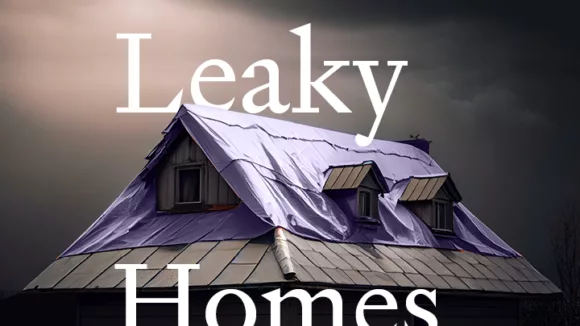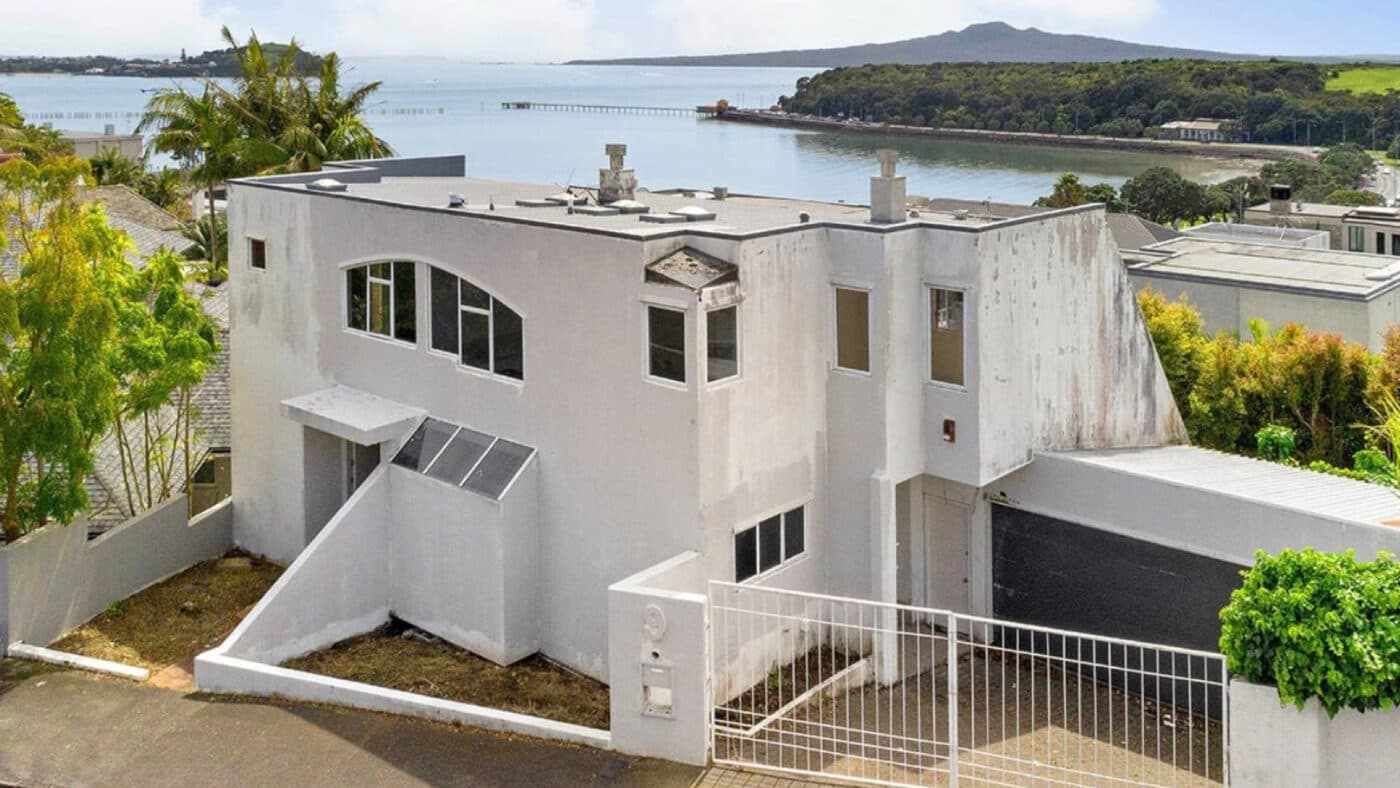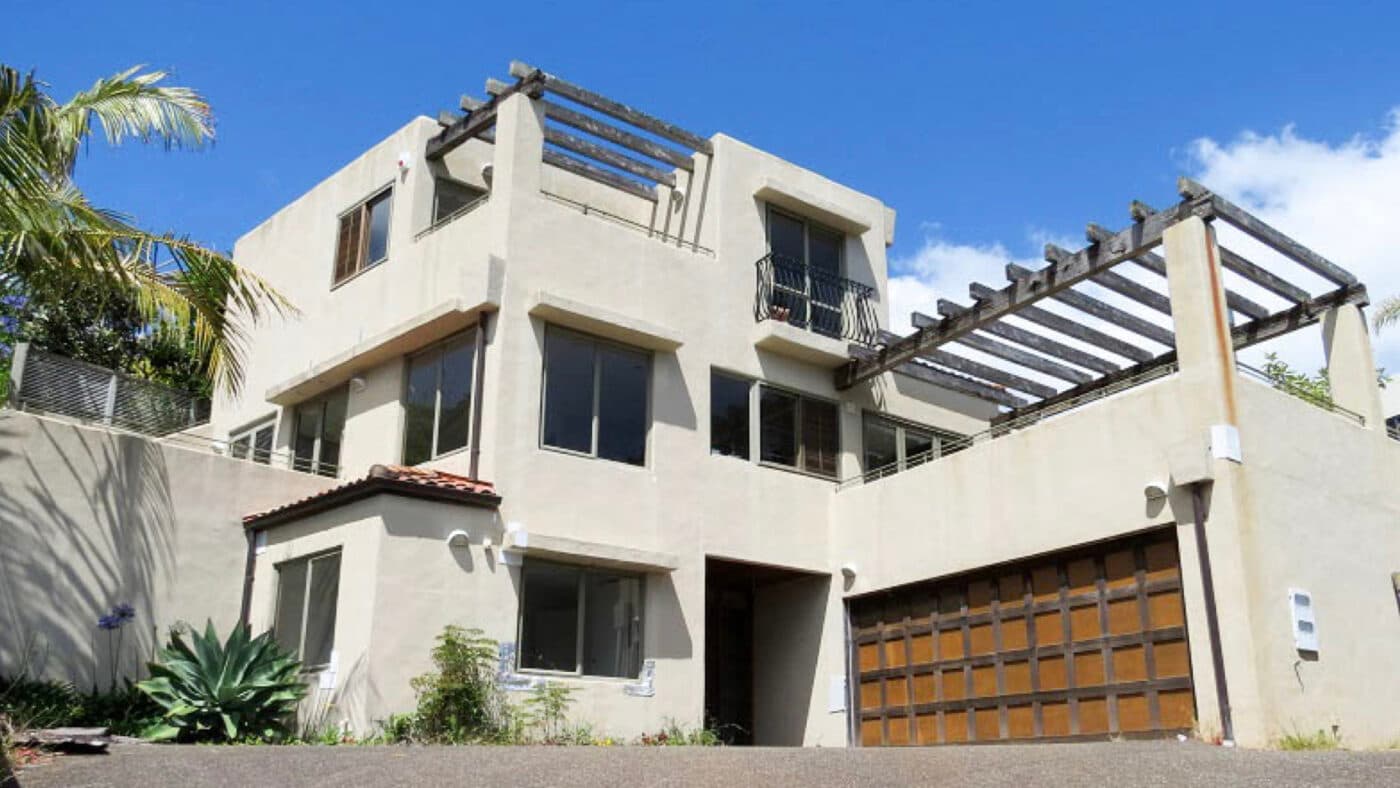
Property Investment
Property Investment
7 min read

In the early 2000s tens of thousands of Kiwi homeowners suffered from a serious building error, which would later be dubbed the “Leaky Homes” crisis.
This issue was caused by a combination of poorly designed building regulations, low-quality materials, and inadequate weatherproofing, leading to moisture entering homes and causing significant damage.
This crisis was extremely costly to all those affected and the lingering effects are still being felt in today’s property market.
With this in mind, property investors today may still worry about purchasing a plaster-built home.
In this article, you'll learn what caused the “Leaky Homes” crisis, what’s been done to prevent it from happening again, and if there are some claddings that should cause you more concern as a property investor.
The clue is in the title.
“Leaky Homes” are properties built between 1988-2004, which were not fully weather-tight, and water (e.g. rain, moisture, and any other type of moisture) leaked through the outside cladding and into the home itself.
Results of the water leak included:
So, it could mean your property has mould problems, or that your property has structural problems. Either way, it’s not a good thing.
The Leaky Homes crisis became very apparent in the early 2000s. And while measures were put in place to rectify the problem (more on this below) Leaky Homes continue to be a problem today.

Leaky Homes were a result of a whole heap of bad design decisions happening at that time.
These were the 3 main issues:
In 1993, a new building code came into practice at the same time more homes were being built in a Mediterranean style.
This style of home had flat roofs, no eaves, and was built with plaster – rather than the tried-and-true brick facade.
Monolithic cladding was the material to give properties that sleek Morrocan-esque, seamless look.
But plaster wasn’t the issue; it was the way the plaster was used in the overall design.
Water passes through all cladding – not just plaster (like everyone thinks it is) but bricks too.
The building industry has known this since the early 1900s, which is why brick homes were built with a 30-60mm cavity (or a gap) between the external cladding wall and the interior structure.
The brick you see on the outside is the wallpaper that makes it look pretty. Behind that you've got a gap of about 30-60mm, then you've got the framing and structure of the actual house.
But around this time these homes were built with timber frames, and the exterior cladding (the plaster) was attached directly to the structure (e.g. it was touching the timber behind it).
The only line of defence between the elements and the timber structure holding up your house was a 3mm coat of paint.
Granted, it was wicked cool paint designed especially for the job of waterproofing, but this is not infallible.
And because the roof was flat the water would pool for longer than it should, and when it did finally roll off, it rolled directly down the walls. Again leaking in the timber structure.
To make matters worse the timber was often untreated and would rot quickly because water got to it.
Everything seemed fine for the first 3-5 years, and then the problems started.

After it became clear paint wasn’t holding up as the waterproofer everyone thought it was, the Building Act was amended in 2004.
So today the way we build properties has changed.
For starters, cavities (a gap between the interior and exterior) were reintroduced to allow water to drain away from the house frame.
Flat roofs and eaves dissolved as a trend, and major changes were made to the building code.
Many potential home buyers, and investors, now worry about plaster-built homes.
Sometimes property investors will even be put off a purchase because they think: “I don’t want to buy that property, because it’s got plaster on it”.
This is because plaster has often been the sole conspirator behind the Leaky Homes crisis.
But the issue wasn’t the plaster per se, it was the way it was being used. Sure, plaster allows water through, but so does brick.
The most important factor to remember now is the cavity system (written into the Building Act in 2004), which is a gap between the exterior cladding and the internal structure.
This way the water leaks through the cladding and drains away down the cavity, rather than into the timber structure.
Not always. Some homes were so water-logged and rotten they had to be bulldozed.
Some properties can be fixed, but this is expensive.
An average 2-storey house in Auckland can cost anywhere between $330k and $380k, and this can go up to, and beyond, $500k. This depends on the state of the damage to the house.
Here’s how it’s broken down. You’re looking at:
Generally speaking, you can’t borrow against the future value of the house.
This means you can’t go to the bank and say: “My property is going to be worth X amount after I make these repairs” and expect the bank to lend to you from that amount.
So, you need to have the cash or the usable equity to go ahead.
Generally speaking, the building work takes about 16 weeks. But when you factor in having to deal with council consent, you could be looking at (up to) 12 months. Bottom line: It’s not going to be a quick fix.
That said, let’s say you did have the money, and the time, to complete this type of complex renovation – there could be an opportunity for investors.
Yes, it would.
Section 64e, DH5-7F states: If the property wasn't previously weathertight, and the CCC was issued after 27 March 2020, and at least 75% of the cladding has been replaced – then it would be considered a new build.
This means that rather than completing a standard renovation, some investors might consider converting a previous leaky home.
Some might say: “No sane person would reclad a house for the tax benefits”.
But it’s written into law as a possibility.
If this does appeal to you, there are a few criteria you need to fill.
For instance, 75% of the house needs to be reclad. So, if you only need to reclad just the top half, you’re not going to meet the 75% threshold.
Now, it’s probably not worth doing a full reclad for just the tax benefits, but it will improve the value, and the rental income, of the property.
Take all this into account, and maybe it could be a good idea for an experienced investor, but you’ve got to have the equity behind you to do it.
There are a few things you can look at to see if your property is at risk of being “leaky”.
#1 - Look at the building’s age.
Cavity systems were implemented after the building code was changed in 2004. So, if your home was built before that you are at more of a risk.
#2 - Check the documents.
Make sure you look at the LIM report, the property file, and the construction file. Specifically, you’re looking to see if the gap exists between the external layer and the internal structure.
#3 – Check the actual property.
Unless you know how to look for a cavity yourself, hire a building inspector to look at your property.
Remember, it’s always good practice to hire an independent contractor of your choosing.
No. If you ask a property inspector (and we did) they will tell you: “Investors only need to worry about purchasing plaster homes that don’t have a cavity system.”
This system was introduced between 2004-2007.
So investors purchasing homes after this period generally needn’t be worried.
Yes, some elements were made of plaster. But remember, plaster wasn’t the main issue. It was the overall design flaw, and putting too much trust in a lick of paint.
Journalist and Property Educator, holds a Bachelor of Communication (Honours) from Massey University.
Laine Moger, a seasoned Journalist and Property Educator holds a Bachelor of Communications (Honours) from Massey University and a Diploma of Journalism from the London School of Journalism. She has been an integral part of the Opes team for four years, crafting content for our website, newsletter, and external columns, as well as contributing to Informed Investor and NZ Property Investor.
This article is for your general information. It’s not financial advice. See here for details about our Financial Advice Provider Disclosure. So Opes isn’t telling you what to do with your own money.
We’ve made every effort to make sure the information is accurate. But we occasionally get the odd fact wrong. Make sure you do your own research or talk to a financial adviser before making any investment decisions.
You might like to use us or another financial adviser